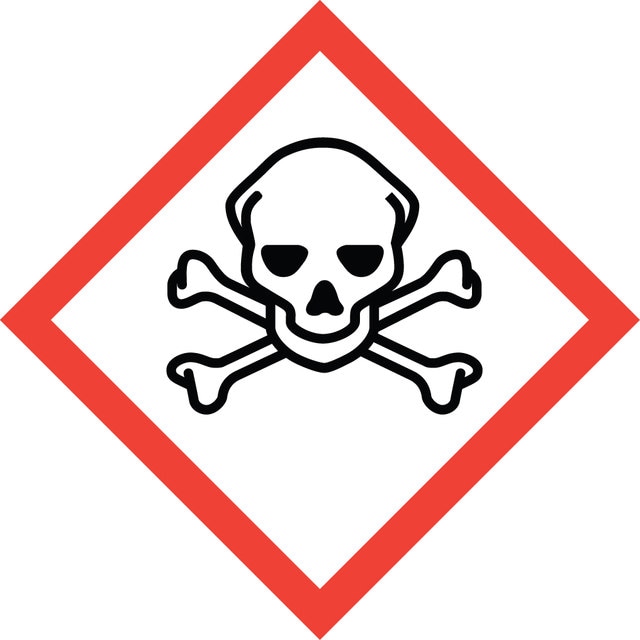Sign In to View Organizational & Contract Pricing
Select a Size
About This Item
Empirical Formula (Hill Notation):
C4H3FN2O2
CAS Number:
Molecular Weight:
130.08
Beilstein:
127172
MDL number:
UNSPSC Code:
41116107
PubChem Substance ID:
NACRES:
NA.24
grade
pharmaceutical primary standard
API family
fluorouracil
manufacturer/tradename
EDQM
mp
282-286 °C (dec.) (lit.)
application(s)
pharmaceutical (small molecule)
format
neat
storage temp.
2-8°C
SMILES string
FC1=CNC(=O)NC1=O
InChI
1S/C4H3FN2O2/c5-2-1-6-4(9)7-3(2)8/h1H,(H2,6,7,8,9)
InChI key
GHASVSINZRGABV-UHFFFAOYSA-N
Gene Information
human ... TYMS(7298)
Looking for similar products? Visit Product Comparison Guide
General description
This product is provided as delivered and specified by the issuing Pharmacopoeia. All information provided in support of this product, including SDS and any product information leaflets have been developed and issued under the Authority of the issuing Pharmacopoeia.For further information and support please go to the website of the issuing Pharmacopoeia.
Application
Fluorouracil EP Reference standard, intended for use in laboratory tests only as specifically prescribed in the European Pharmacopoeia.
Packaging
The product is delivered as supplied by the issuing Pharmacopoeia. For the current unit quantity, please visit the EDQM reference substance catalogue.
Other Notes
Sales restrictions may apply.
Signal Word
Danger
Hazard Statements
Precautionary Statements
Hazard Classifications
Acute Tox. 3 Oral - Carc. 2
Storage Class Code
6.1C - Combustible acute toxic Cat.3 / toxic compounds or compounds which causing chronic effects
WGK
WGK 3
Choose from one of the most recent versions:
Already Own This Product?
Find documentation for the products that you have recently purchased in the Document Library.
André Bp van Kuilenburg et al.
Pharmacogenomics, 14(7), 799-811 (2013-05-09)
5-fluorouracil (5-FU) remains the cornerstone of all currently applied regimens for the treatment of patients with cancers of the gastrointestinal tract, breast, and head and neck. Unfortunately, a large variation in the clearance of 5-FU has been observed between patients
Guido Deboever et al.
Clinical colorectal cancer, 12(1), 8-14 (2012-10-30)
Most chemotherapy regimens in colorectal cancer treatment are 5-fluorouracil (5-FU)/leucovorin or capecitabine-based. Cardiotoxicity is a less common but potentially lethal complication of 5-FU or capecitabine treatment, and some physicians might be unfamiliar with treatment alternatives. Rechallenging should be avoided because
John M L Ebos et al.
EMBO molecular medicine, 6(12), 1561-1576 (2014-11-02)
Thousands of cancer patients are currently in clinical trials evaluating antiangiogenic therapy in the neoadjuvant setting, which is the treatment of localized primary tumors prior to surgical intervention. The rationale is that shrinking a tumor will improve surgical outcomes and
Larissa S Carnevalli et al.
The Journal of experimental medicine, 211(5), 769-779 (2014-04-23)
The serine protease granzyme B (GzmB) is stored in the granules of cytotoxic T and NK cells and facilitates immune-mediated destruction of virus-infected cells. In this study, we use genetic tools to report novel roles for GzmB as an important
Tania Diaz et al.
Journal of surgical oncology, 109(7), 676-683 (2014-02-11)
Surgery is the standard treatment for colorectal cancer (CRC), and adjuvant chemotherapy has been shown to be effective in stage III but less so in stage II. We have analyzed the expression of the miR-200 family in tissue samples from
Our team of scientists has experience in all areas of research including Life Science, Material Science, Chemical Synthesis, Chromatography, Analytical and many others.
Contact Technical Service
